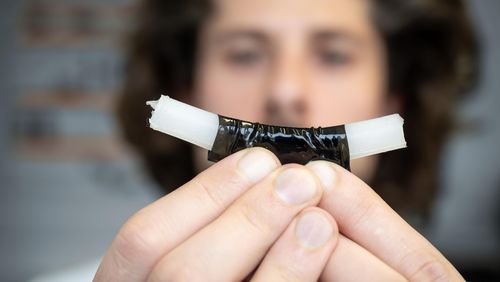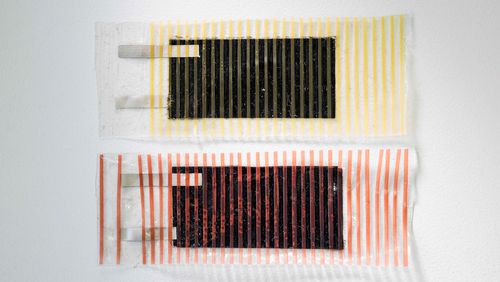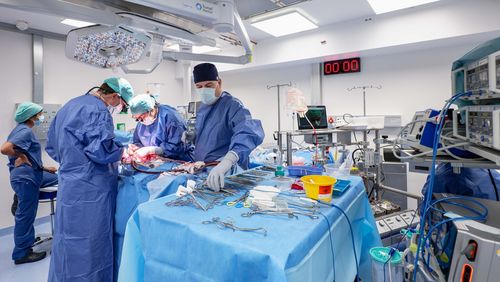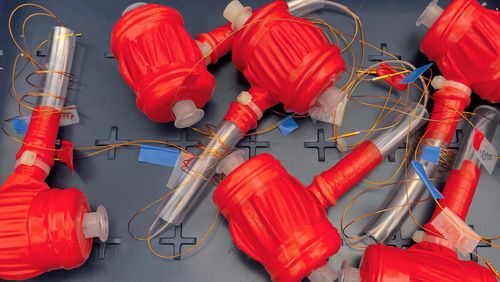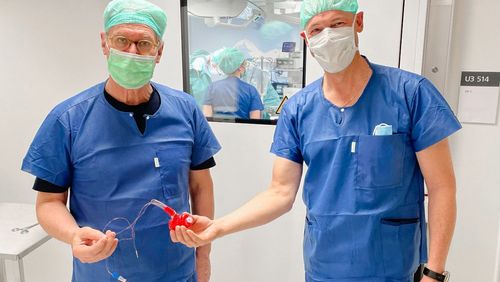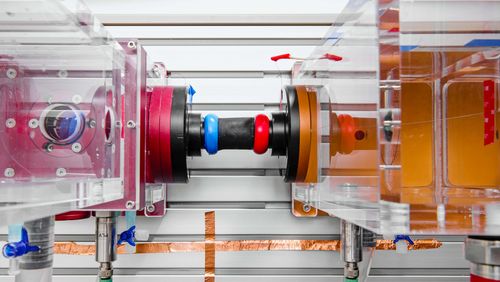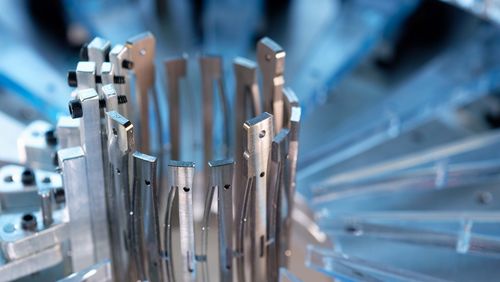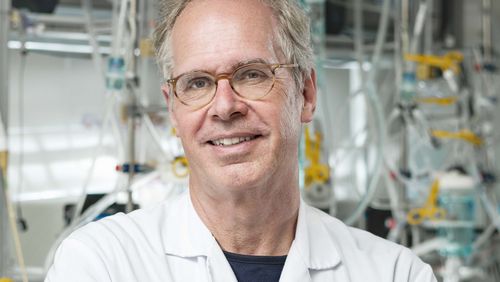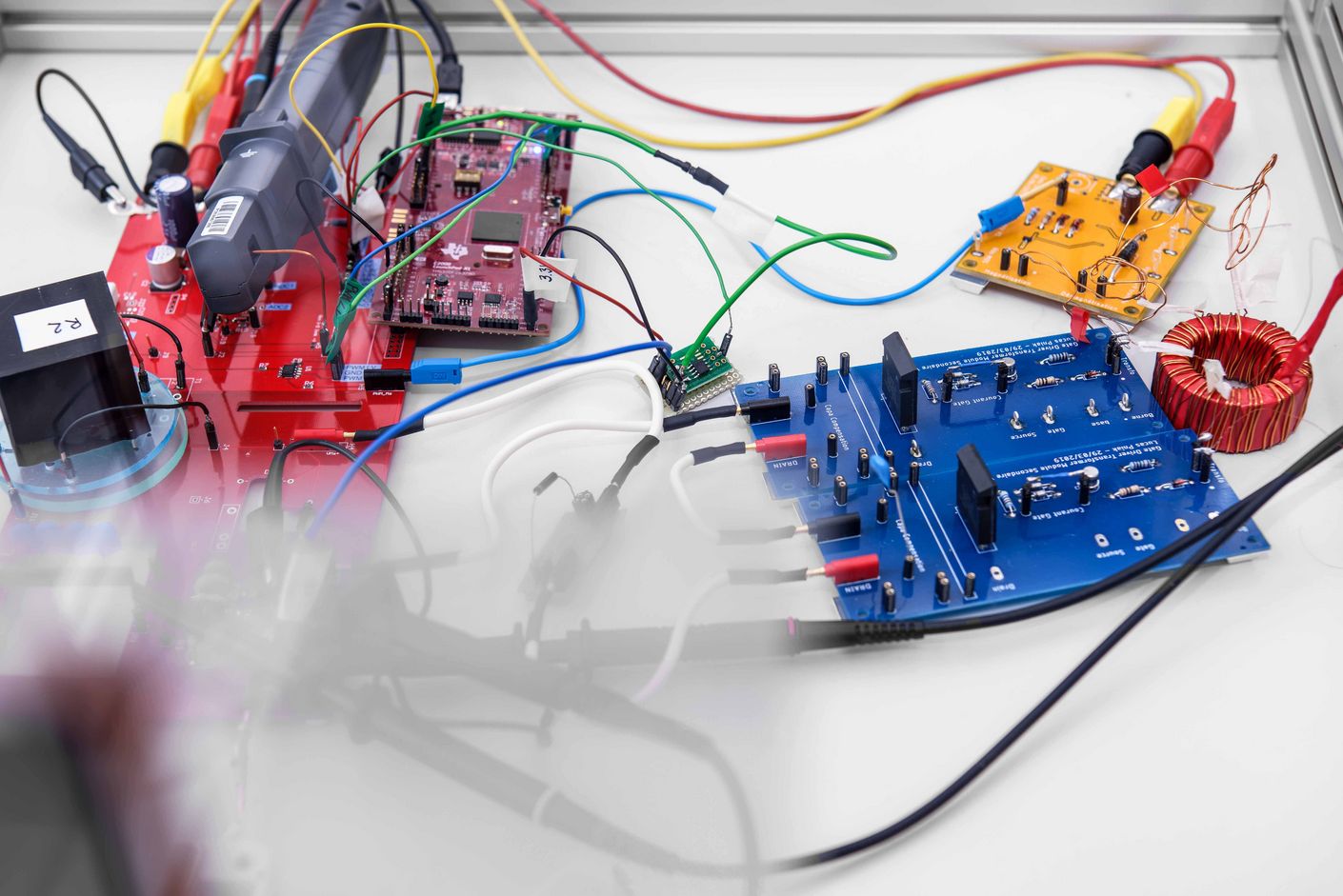
The tension mounts
The Werner Siemens Foundation is financing the Center for Artificial Muscles in Neuchâtel, Switzerland—and with it an innovative team of researchers, who are developing a novel approach to treating cardiac insufficiency: placing a ring-shaped artificial muscle around the aorta to give weak hearts a boost. The first preclinical studies have been scheduled.
Every day, the human heart pumps over 7000 litres of blood through the body. An impressive feat. Over the course of a lifetime, however, many people develop cardiac insufficiency. Till now, doctors have treated the condition by prescribing medication or inserting ventricular pumps—but neither therapy is free from risk. As an alternative, Professor Yves Perriard and his team at the Center for Artificial Muscles, an institute at the École Polytechnique Fédérale de Lausanne, are working to create a ring-shaped artificial muscle made of an elastic membrane that can be wrapped around the aorta. Electrical impulses from a battery cause the membrane to expand; when the voltage is switched off, the membrane assumes its original shape. The resulting pressure on the aorta helps the heart pump blood through the body.
Greater pumping capacity
For the past three years, the Werner Siemens Foundation has been funding the multidisciplinary team made up of micro engineers, materials scientists, biomedicine specialists and surgeons. In 2020, the researchers made key advances in the most challenging area of the project: attaining the necessary pumping capacity—and this with a membrane that is biocompatible to prevent tissue rejection. As a rule, our hearts require one watt of electrical power to function properly. In patients suffering from severe cardiac insufficiency, the artificial muscle would have to perform 30 to 50 percent of the work. But ideally, the aorta ring will also be used in less severe cases, where an additional 5 to 10 percent would be enough to attain normal pumping capacity. Researchers hope the extra boost could even help weak hearts to recover and function on their own again. The team has already developed an aorta ring that supplies this lower power level. “Right now, our membrane can generate about 10 percent of the heart’s pumping capacity,” says project leader Yves Perriard. But the work continues: 20 percent capacity is the next goal. To meet the target, the researchers are seeking solutions for the main elements of the artificial muscle: the right material, the number of layers required and the best power supply for the aorta ring.
Optimised membrane
The team started their search for the right material with Elastosil®, an ultra-thin silicone rubber film. In tests, the material has proven highly promising, as it can bear a sufficiently large load of electricity without growing brittle. The researchers have conducted various experiments with the silicone rubber, including experiments in their custom-made testing unit that simulates blood circulation in the body. Now, the first preclinical studies on animals to assess the functionality of the aorta ring are scheduled for 2021. At the same time, the team are widening their search for an even better material for the membrane and have already developed a prototype of a custom-made product. Another crucial factor is the number of layers needed for the ring. To connect the layers, the researchers have invented a novel type of glue—and filed a patent for their invention.
Up to 7 000 volts
The team have made great advances in designing the power supply for the aorta ring, which takes the shape of a 12-volt battery for patients to wear on a belt. The 5 000 volts of electricity required to power the artificial muscle are generated via magnetic induction; should the material ultimately selected require a higher voltage, the system could even supply up to 7 000 volts. Nevertheless, the mantra is: as much as necessary, as little as possible. At the start of 2021, the individual components of the power supply will be ready to be connected to the aorta ring. Then the system’s efficiency will be tested. The researchers are particularly interested in recovering the energy stored in the aorta ring and then channelling it back into the electric circuit. During the preclinical phase and the subsequent clinical phase, Perriard and his Neuchâtel team will work with specialists from the University of Bern and the University Hospital Zurich. Starting in 2025, renowned cardiac surgeon Thierry Carrel plans to begin testing the aorta ring in clinical trials. The artificial muscle created in Neuchâtel could also help patients other than those with weak hearts. The researchers hope to use it as an artificial sphincter in cases of urinary incontinence. In addition, the technology has the potential to restore chewing function and facial expressions to accident and burn victims. In 2020, the research team began preparatory work on an artificial sphincter and have already been granted two patents for their innovations.
Text: Adrian Ritter
Photo: Felix Wey

